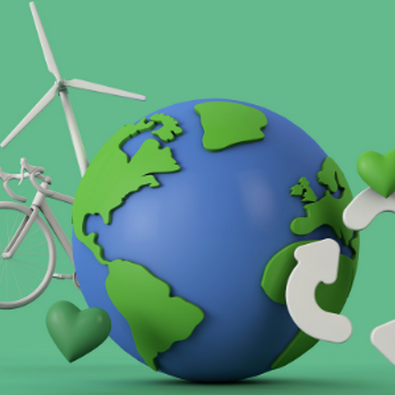
Quick Guide to Recycling Plastics
America is drowning in trash. Americans put 27 million tons of plastic in landfills in 2018 alone. That's roughly 75% of the plastic Americans produced that year.
Many people assume that they can't recycle plastic. That is not true. You just need to look for recycling symbols in order to determine the recyclability of your plastic.
What is the universal recycling symbol? What do the numbers on your recycling symbols mean? How can you help recycle your plastics?
Answer these questions and you can make a small yet substantial contribution to the environment. Here is your quick guide.

The Universal Recycling Symbol
The universal recycling symbol contains three twisting arrows. These arrows point to each other, forming a triangle with rounded corners.
Gary Anderson designed the symbol in 1970 for a graphic design contest. But the symbol is in the public domain, so anyone can use it for any purpose.
You may notice variations of the symbol depending on your location. The arrows may be different colors, or text explaining something may accompany them. Yet most countries around the world rely on the arrows to indicate that something can be recycled.
The most common variation contains recycling symbol numbers. Each number signifies a type of plastic, which can impact how the plastic is recycled and used.
Many people assume that the higher a recycling number is, the more difficult it is to recycle the product. The recycling symbol meaning does not function like that. Most plastics can go through standard recycling systems, though the recycling process may not be easy.
Some companies take advantage of the symbol's public domain status. They put it on their products in order to trick consumers into thinking they are environmentally friendly. You should always examine the materials that go into the products you buy to see if they are recyclable.

Recycling Symbol 1
Manufacturers make more than 82 million metric tons of polyethylene terephthalate (PETE) every year. You can find it in soft drink bottles and salad dressing containers. It is a plastic you can use one-time, and it is inexpensive and lightweight.
If you spot plastic recycling symbols with the number 1 on them, you are looking at PETE. You can recycle PETE through any means.
You should empty the plastic container out and remove any food residue in it. You can use water and soap, but make sure the container dries out. Companies like to put recycled PETE into bags, furniture, and flooring.
You can also reuse PETE plastic containers for your own benefit. You can use them for keeping your yard clean, collecting trash in them.

Recycling Symbol 2
Symbol 2 refers to high-density polyethylene (HDPE). HDPE is another versatile plastic. Milk jugs, detergent bottles, and trash bags can contain HDPE.
Recycling companies can process HDPE easily and recycle it into other products. You can place jugs and bottles with the plastic into your curbside recycling bin. Trash bags are hard to recycle, but you may be able to give them to a store for processing.

Recycling Symbol 3
Polyvinyl chloride (PVC) is a tough plastic that you can find in piping and housing materials. PVC contains chlorine and other toxic chemicals, and they can become released if it catches on fire.
This can make it tricky to recycle, though you can recycle it. Some manufacturers of housing materials will accept your PVC pipes from you. If you can't find a manufacturer, you can bring your pipes to a waste management facility.

Recycling Symbol 4
You can find low-density polyethylene (LDPE) in shopping bags, plastic coverings for furniture, and squeezable bottles. Yet many recycling programs have not accepted LDPE plastic. The plastic can get tangled inside machinery because of how lightweight it is.
You should try to avoid recycling thin bags with LDPE in them. But you can hand your bottles and coverings to your local recycling program.

Recycling Symbol 5
Polypropylene (PP) is a plastic with a very high melting point. Most plastic containers that hold hot liquid like oil or grease contain PP in them. Many manufacturers also place PP in caps and straws, especially for drinks like coffee.
Symbol 5 marks PP containers. The presence of this symbol does not mean that all programs will accept the containers. Caps are extremely hard to recycle because they are small and hard.

Recycling Symbol 6
You may have heard of polystyrene (PS) before. Manufacturers put it into foam products to make Styrofoam. You can also find PS in disposable plates, carry-out containers, and CD cases.
PS contains molecules that can produce cancer cells. This means that recycling centers are hesitant to recycle PS.
Yet PS containers have recycling symbol 6 on them, and some centers do accept them. You should put PS and Styrofoam products in a plastic bag and break them into small pieces for easy processing.

Miscellaneous Plastics
All other types of plastic fall under recycling symbol 7. Polycarbonate is a plastic you can find in large water bottles and signs. Though it can be recyclable, very few recycling centers accept it because it can be hard to process.

The Meanings of Your Recycling Symbols
Recycling symbols are simple yet profound. The universal recycling symbol is the same almost everywhere. The numbers designate different kinds of plastics.
You can recycle most plastics you use. Wash out your PET and HDPE containers with water and then pop them in your recycling pins.
You need to be more careful with PVC and LDPE containers. You may need to bring them to special facilities for processing. Symbol 7 refers to miscellaneous plastics, so do your research before recycling products with the symbol.
Get help managing your waste. College HUNKS provides premium hauling services. Contact us today.
